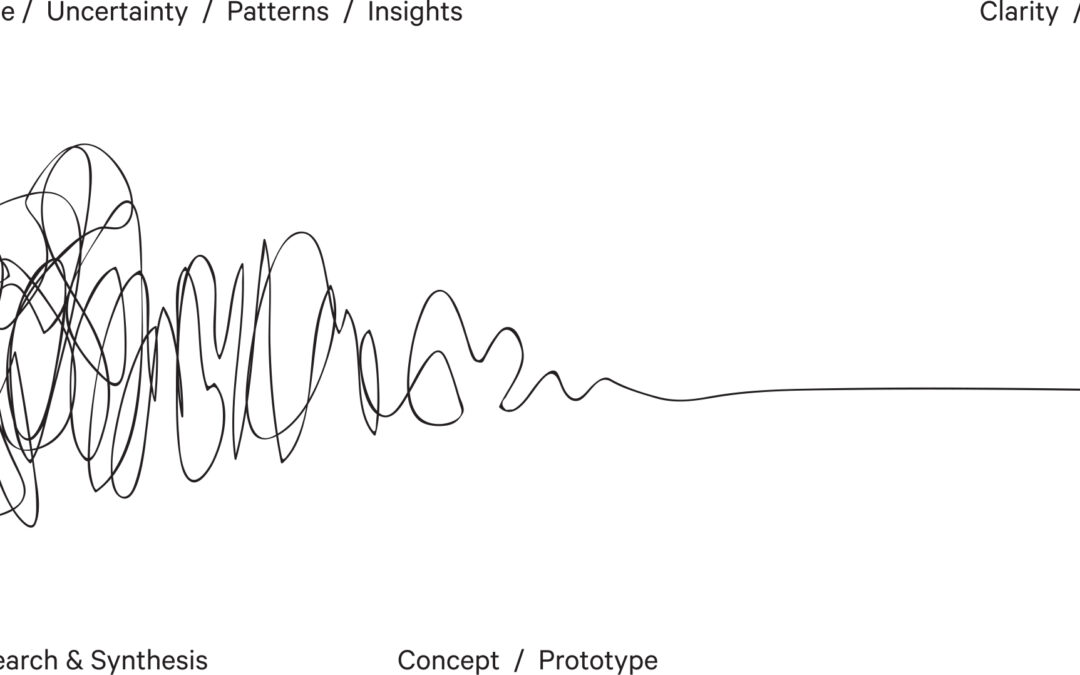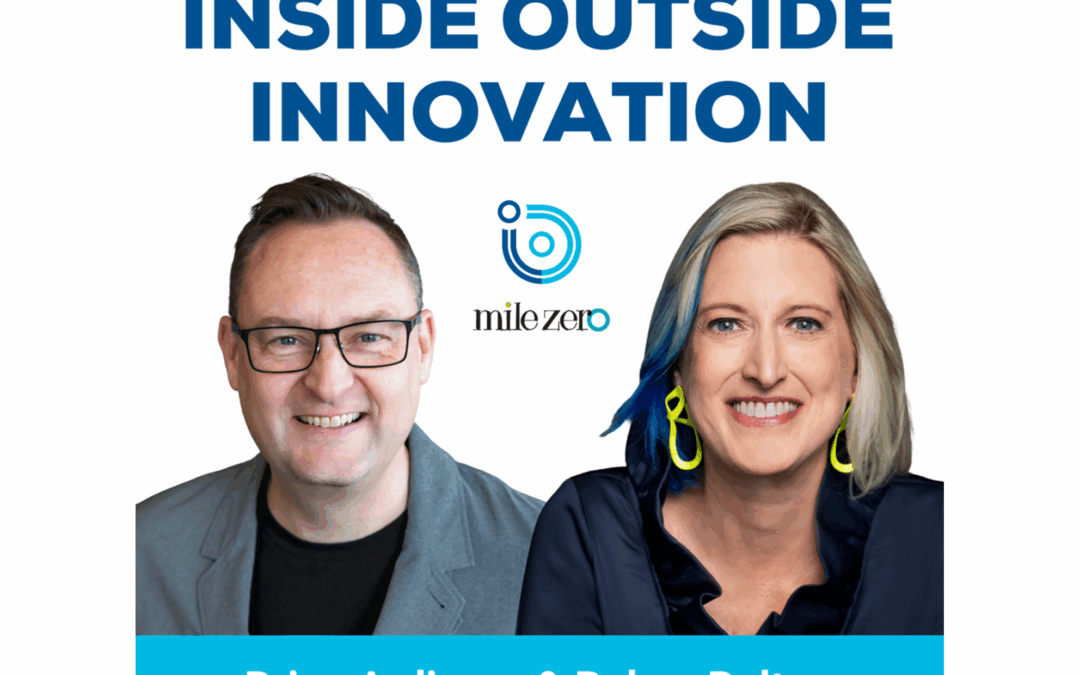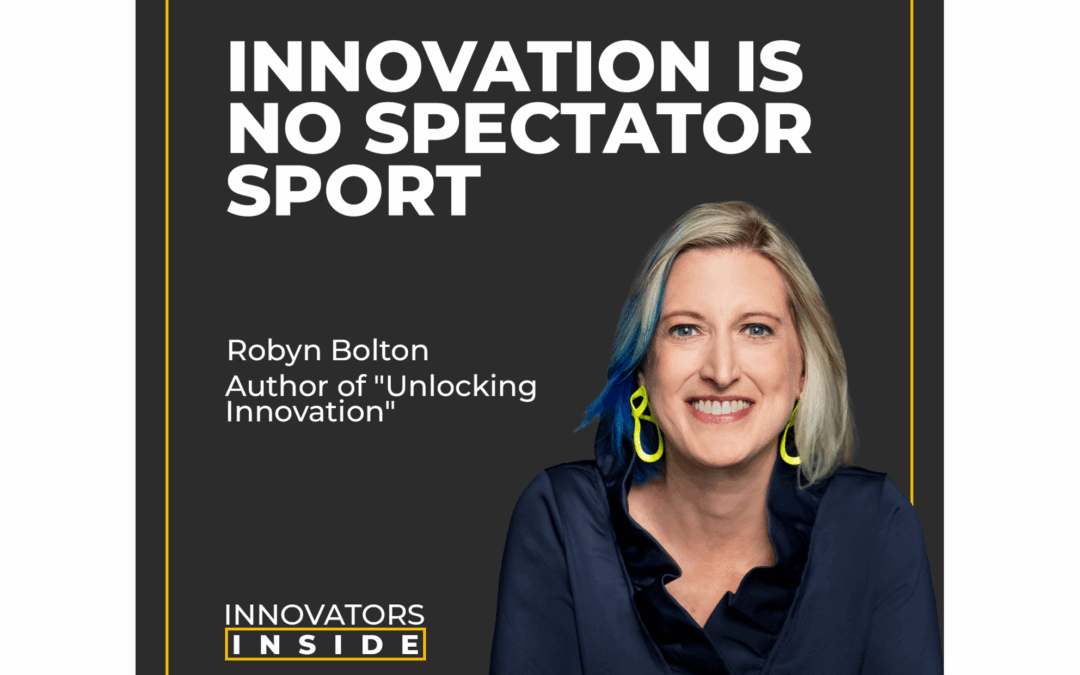


The Design Squiggle is a Lie. This is Why.
Last night, I lied to a room full of MBA students. I showed them the Design Squiggle, and explained that innovation starts with (what feels like) chaos and ends with certainty.
The chaos part? Absolutely true.
The certainty part? A complete lie.
Nothing is ever Certain (including death and taxes)
Last week I wrote about the different between risk and uncertainty. Uncertainty occurs when we cannot predict what will happen when acting or not acting. It can also be broken down into Unknown uncertainty (resolved with more data) and Unknowable uncertainty (which persists despite more data).
But no matter how we slice, dice, and define uncertainty, it never goes away.
It may be higher or lower at different times,
More importantly, it changes focus.
4 Dimensions of Uncertainty
Something new that creates value (i.e. an innovation) is multi-faceted and dynamic. Treating uncertainty as a single “thing” therefore clouds our understanding and ability to find and addresses root causes.
That’s why we need to look at different dimensions of uncertainty.
Thankfully, the ivory tower gives us a starting point.
WHAT: Content uncertainty relates to the outcome or goal of the innovation process. To minimize it, we must address what we want to make, what we want the results to be, and what our goals are for the endeavor.
WHO: Participation uncertainty relates to the people, partners, and relationships active at various points in the process. It requires constant re-assessment of expertise and capabilities required and the people who need to be involved.
HOW: Procedure uncertainty focuses on the process, methods, and tools required to make progress. Again, it requires constant re-assessment of how we progress towards our goals.
WHERE: Time-space uncertainty focuses on the fact that the work may need to occur in different locations and on different timelines, requiring us to figure out when to start and where to work.
It’s tempting to think each of these are resolved in an orderly fashion, by clear decisions made at the start of a project, but when has a decision made on Day 1 ever held to launch day?
Uncertainty in Pharmaceutical Development
Let’s take the case of NatureComp, a mid-sized company pharmaceutical company and the uncertainties they navigated while working to replicate, develop, and commercialize a natural substance to target and treat heart disease.
- What molecule should the biochemists research?
- How should the molecule be produced?
- Who has the expertise and capability to synthetically poduce the selected molecule because NatureComp doesn’t have the experience required internally?
- Where to produce that meets the synthesization criteria and could produce cost-effectively at low volume?
- What target disease specifically should the molecule target so that initial clincial trials can be developed and run?
- Who will finance the initial trials and, hopefully, become a commercialization partner?
- Where would the final commercial entity exist (e.g. stay in NatureComp, move to partner, stand-alone startup) and the molecule produced?
And those are just the highlights.
It’s all a bit squiggly
The knotty, scribbly mess at the start of the Design Squiggle is true. The line at the end is a lie because uncertainty never goes away. Instead, we learn and adapt until it feels manageable.
Next week, you’ll learn how.

Handwriting, Hype, & The Future of Innovation

The Leadership Problem at the Heart of Innovation

We’ve Got Uncertainty & Risk All Wrong (and It’s Killing Our Business)
In September 2011, the English language officially died. That was the month that the Oxford English Dictionary, long regarded as the accepted authority on the English language published an update in which “literally” also meant figuratively. By 2016, every other major dictionary had followed suit.
The justification was simple: “literally” has been used to mean “figuratively” since 1769. Citing examples from Louisa May Alcott’s Little Women, Charles Dickens’ David Copperfield, Charlotte Bronte’s Jane Eyre, and F. Scott Fitzgerald’s The Great Gatsby, they claimed they were simply reflecting the evolution of a living language.
What utter twaddle.
Without a common understanding of a word’s meaning, we create our own definitions which lead to secret expectations, and eventually chaos.
And not just interpersonally. It can affect entire economies.
Maybe the state of the US economy is just a misunderstanding
Uncertainty.
We’re hearing and saying that word a lot lately. Whether it’s in reference to tariffs, interest rates, immigration, or customer spending, it’s hard to go a single day without “uncertainty” popping up somewhere in your life.
But are we really talking about “uncertainty?”
Uncertainty and Risk are not the same.
The notion of risk and uncertainty was first formally introduced into economics in 1921 when Frank Knight, one of the founders of the Chicago school of economics, published his dissertation Risk, Uncertainty and Profit. In the 114 since, economists and academics continued to enhance, refine, and debate his definitions and their implications.
Out here in the real world, most businesspeople use them as synonyms meaning “bad things to be avoided at all costs.”
But they’re not synonyms. They have distinct meanings, different paths to resolution, and dramatically different outcomes.
Risk can be measured and/or calculated.
Uncertainty cannot be measured or calculated
The impact of tariffs, interest rates, changes in visa availability, and customer spending can all be modeled and quantified.
So it’s NOT uncertainty that’s “paralyzing” employers. It’s risk!
Not all Uncertainties are the same
According to Knight, Uncertainty drives profit because it connects “with the exercise of judgment or the formation of those opinions as to the future course of events, which…actually guide most of our conduct.”
So while we can model, calculate, and measure tariffs, interest rates, and other market dynamics, the probability of each outcome is unknown. Thus, our response requires judgment.
Sometimes.
Because not all uncertainties are the same.
The Unknown (also known as “uncertainty based on ignorance”) exists when there is a “lack of information which would be necessary to make decisions with certain outcomes.”
The Unknowable (“uncertainty based on ambiguity”) exists when “an ongoing stream [of information] supports several different meanings at the same time.”
Put simply, if getting more data makes the answer obvious, we’re facing the Unknown and waiting, learning, or modeling different outcomes can move us closer to resolution. If more data isn’t helpful because it will continue to point to different, equally plausible, solutions, you’re facing the Unknowable.
So what (and why did you drag us through your literally/figuratively rant)?
If you want to get unstuck – whether it’s a project, a proposal, a team, or an entire business, you first need to be clear about what you’re facing.
If it’s a Risk, model it, measure it, make a decision, move forward.
If it’s an uncertainty, what kind is it?
If it’s Unknown, decide when to decide, ask questions, gather data, then, when the time comes, decide and move forward
If it’s Unknowable, decide how to decide then put your big kid pants on, have the honest and tough conversations, negotiate, make a decision, and move on.
I mean that literally.